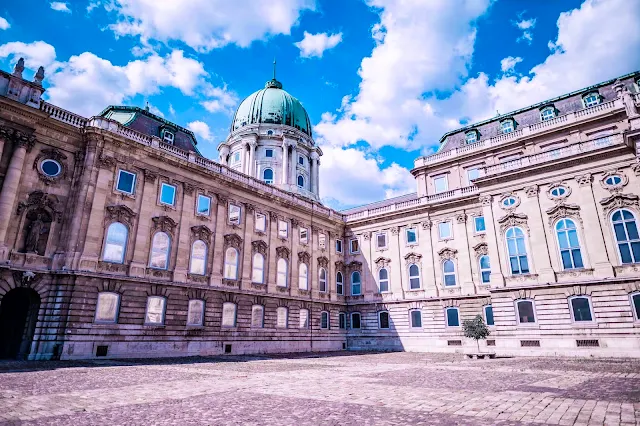Széchenyi Castle: Gothic and Baroque Elegance in Budapest
Introduction
Széchenyi Castle, nestled in the heart of Budapest, Hungary, is a striking historical monument that reflects the grandeur of Hungary’s architectural legacy. The castle, although not as well-known as other European landmarks, is a symbol of Hungary's rich cultural and architectural history, representing both Gothic Revival and Baroque influences. It stands as a testament to the deep historical roots of Budapest, offering visitors a glimpse into the grandeur of Hungary's aristocratic past.The History of Széchenyi Castle
Built in the late 19th century, Széchenyi Castle was designed during the time of Hungary's national revival, a period when the country was reclaiming its identity and prestige following the dissolution of the Austro-Hungarian Empire. Named after István Széchenyi, one of Hungary's greatest statesmen, the castle represents the spirit of innovation, culture, and progress that Széchenyi himself championed.Széchenyi Castle was initially constructed as part of a larger architectural project that sought to preserve and honor Hungary’s cultural history. The structure itself has undergone numerous renovations and adaptations over the years, standing strong through various historical upheavals, including both World Wars. Today, it is a cherished site in Városliget Park, one of the largest public parks in Budapest, and continues to draw visitors with its architectural beauty and rich history.
Architectural Significance
The design of Széchenyi Castle reflects a unique blend of Gothic Revival and Baroque styles, offering a distinct architectural experience. The castle’s pointed arches, grand facades, and intricate stone carvings are prime examples of Gothic Revival architecture, a style that was popular across Europe in the 19th century. The Baroque elements, seen in the grand entrance and the castle's richly ornamented interiors, reflect Hungary’s ties to the Austro-Hungarian Empire.One of the most impressive aspects of the castle is its towers and spires, which rise dramatically above the surrounding park. These features give the castle a fairytale-like appearance, especially when viewed at dusk, when the lights of the city reflect off its stone walls. Inside, visitors will find lavish rooms adorned with period furniture, tapestries, and art that highlight Hungary's aristocratic past.
Széchenyi Castle and Hungarian Nobility
Széchenyi Castle has a strong connection to Hungary’s nobility, serving as a gathering place for Hungary’s elite throughout its history. It was used for lavish events, cultural performances, and political meetings, especially during Hungary’s national awakening in the 19th century. The castle’s namesake, István Széchenyi, is often referred to as the "Greatest Hungarian" due to his significant contributions to the country’s development in the fields of economy, transportation, and education.Visitors can explore the Széchenyi Museum inside the castle, which houses artifacts from Hungary’s noble families, including furniture, art, and clothing that dates back centuries. The museum provides insights into the luxurious lifestyles of Hungary's aristocrats and their influence on the country's history.
Legends and Myths of Széchenyi Castle
Like many castles, Széchenyi Castle is surrounded by legends and myths. One of the most famous stories involves István Széchenyi himself, whose spirit is said to roam the halls of the castle. According to local legend, Széchenyi, who was deeply invested in Hungary’s future, returns to the castle to ensure that the nation’s cultural heritage is preserved for future generations. Some visitors claim to have seen ghostly apparitions or heard mysterious footsteps while exploring the castle's many rooms.Széchenyi Castle Today
Today, Széchenyi Castle is a popular tourist destination in Budapest. Its proximity to Városliget Park makes it an ideal spot for visitors to explore after enjoying the park’s scenic beauty. The castle offers guided tours that provide detailed historical insights into both the structure itself and the life of István Széchenyi.The castle also hosts various cultural events throughout the year, including art exhibitions, classical music concerts, and theatrical performances, making it a lively cultural hub in the heart of Budapest. Its romantic architecture also makes it a popular venue for weddings and special events.
Visiting Széchenyi Castle
A visit to Széchenyi Castle offers more than just a glimpse into Hungary’s past. The castle’s grounds are beautifully landscaped, and visitors can take a leisurely walk through the surrounding gardens before venturing inside. For those interested in learning more about Hungary’s aristocratic history, the castle’s museum is a must-see.Széchenyi Castle is easily accessible from Budapest’s city center, and it is often included in guided tours of the city’s most important historical sites. Visitors can also explore the nearby Széchenyi Thermal Baths, another iconic site in Budapest, to experience both the cultural and natural beauty of Hungary.


